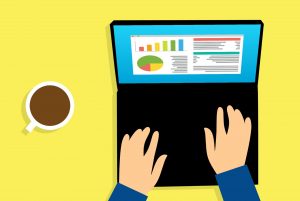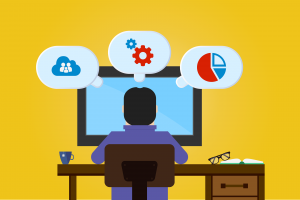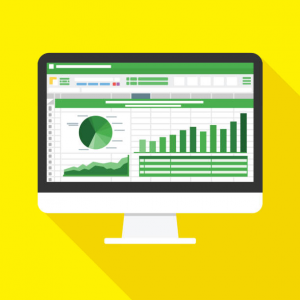Disclosure: Privacy Australia is community-supported. We may earn a commission when you buy a VPN through one of our links. Learn more.
What is Data Analysis?

You do data analysis every day, even if you do not know it. When you look at the nutritional label of food at the grocery store, you are doing data analysis of both its ingredients and the nutrients it offers. When you are figuring out when to work, run errands, and when you can relax, that’s data analysis.
That is because the fundamentals of data analysis are universal.
Table of Contents:
- Data Analysis at its Core
- Data Analysis and Mathematics
- Data Analysis and Programming
- Data Analysis and Predictions
Data Analysis at its Core
Essentially, data analysis is all about looking at data with little to no stated connection and drawing a conclusion from it. But there are tons of ways this can be done to draw more advanced conclusions. This includes using advanced mathematics, programming data models, and making complex predictions.
But let’s not get ahead of ourselves. Advanced mathematics, programming, and predictions are all very different disciplines. Clearly, there is more to data analysis than just looking at spreadsheets and making educated guesses. So, let’s take the different expressions of data analysis one at a time.
Data Analysis and Mathematics
Mathematics is the field in which people tend to grasp data analysis most intuitively. By that, we mean that the assumptions people tend to have about how mathematics works within data analysis are more accurate than how they assume any other discipline works within data analysis.
Why is this? Well, because people are often baffled by advanced mathematics.
Math and Algebra
The kind of math that most people work with involves numbers. But advanced mathematics—particularly everything more complex than algebra—deals almost entirely with letters. This is what allows a field like data analysis to interact with mathematics at all. Because what are letters in math?
If you remember your high school math classes, then you know that a letter is really just a variable. Algebra, in particular, is the study of how math relates to unknown variables. In both data analysis and in algebra, people often wrongly assume that everything needs (or worse, has) a concrete value.
But the reality is that analysts oftentimes find themselves with far too little information to make sound deductions. One of the most important tools that mathematics offers to analysts is not the ability to assign things precise values, but to take things with imprecise values and make their value more certain.
Data Analysis and Programming

Inversely from mathematics, programming is the data analysis field that people most frequently misunderstand. It’s easy to imagine a bespectacled genius hunched over a computer, pounding at a keyboard until they finish a program that comprehends all the world’s problems like nothing before it.
Obviously, the truth of the matter is much different. Though, amusingly, there is some truth to it. Programs have indeed been written that can “understand” certain data patterns more quickly than humans ever could (though their accuracy has been heavily disputed). You might be familiar with them.
The most well-known of these programs are the YouTube and Twitter algorithms. You see, there was a time not so long ago when you would only be shown the things on YouTube and Twitter that you wanted to see, or else the things that were new, popular, or both. But now it is different.
Dozens of different programs work together to figure out what is best to show you. Of course, “best” in this context is not “best” by your standards or even the standards of any human. In this case, the “best” things to show you are the things that keep you the most engaged. This is true for all social media sites.
But you will notice that we said that there are dozens of programs at work here. What does that mean? Well, it means that there will be a program that tracks how much time you spend on the given social media site, a program that tracks how frequently you visit it, and another program that gathers that information. Usually, there will be several “filter” programs leading to a “central” program.
No individual programmer is going to be making all of these programs. But all of these programmers do need at least one data analyst among them to direct what information is gathered, how it is valued, and the manner by which certain data is triaged and not.
Data Analysis and Predictions
For many industries, the purpose of data analysis is primarily to figure out what has happened. But at the highest level, the primary concern of many businesses is predicting what will happen later on.
This is a complex business in a number of ways. Part of the problem with predicting what will happen is that the only data you have to go off of is data from what has happened. Doesn’t that mean that data analysis can only predict something that has already happened? Well, yes and no.
Data analysis is a lot better at predicting things that have already happened. If it will happen again, then all you need to do is look for similar conditions. And since those similar conditions can be assigned a mathematical value, it is far easier for a computer program to detect them and account for them.
But how does a data analyst know that something unprecedented is about to happen? Well, at the very least a data analyst can see that the mathematical expressions for ongoing circumstances are out of line for previous circumstances. Simply put, they know something new is going to happen when something old is not happening. But the weakness of data analysis is that it can’t know exactly what will happen.
Conclusion

Every day, however, the science of data analysis gets more precise. It helps that the world is changing itself to be more predictable. Think of something as simple as a five-star review. Before information had to be aggregated to be understood by machines, very few reviews made use of a rating system.
Now, everything can be turned into data. But data still can’t be turned into anything. So, even as you get into the world of data analysis, remember its limitations as much as its uses.
You Might Also Like:



